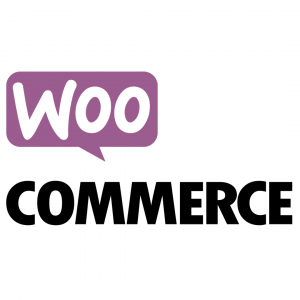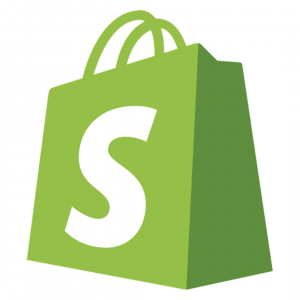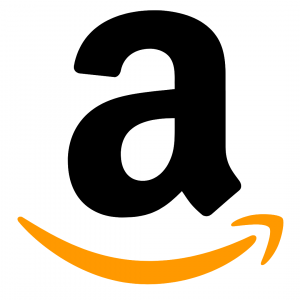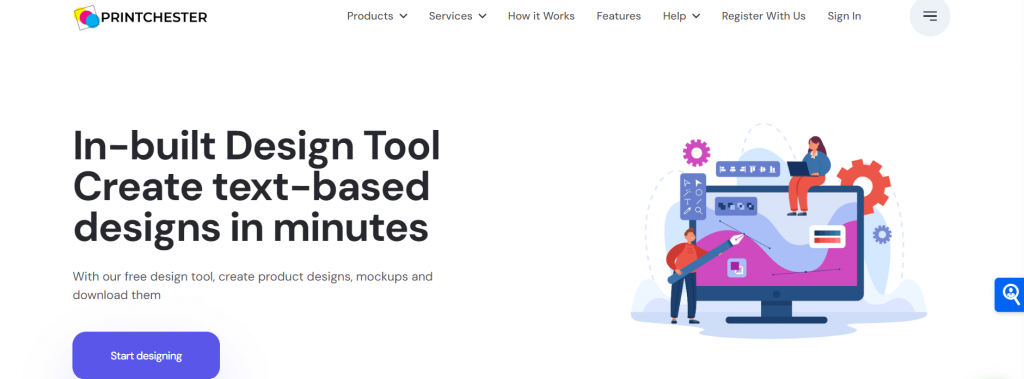Dropshipping vs Ecommerce – The Definitive 2024 Comparison for Your Online Store

Dreaming of an online store but fearing inventory nightmares? A nagging question that lingers is – dropshipping vs ecommerce?
Dropshipping promises a solution, but is it too good to be true? Traditional ecommerce offers control and profits, but with upfront costs. Which is right for you?
This guide cuts through the confusion. We’ll explore dropshipping vs ecommerce, helping you choose the path to online success. No jargon, just clear answers. Let’s unlock your ecommerce potential together!
What is Dropshipping?
Dropshipping allows you to sell products online without holding any inventory yourself. Here’s how it works:
1. Customer places an order: A customer finds a product on your online store
2. You forward the order: You receive the order details and payment and send them to your dropshipping supplier.
3. Supplier fulfills the order: The supplier packages and ships the product directly to your customer.
4. You handle customer service: You answer any questions or address any issues your customer may have.
💡Learn more: What is dropshipping? A Detailed Guide
Benefits of Dropshipping
- Low startup costs: No upfront investment in inventory means a lower financial barrier to entry compared to traditional ecommerce.
- Easy to manage: Dropshipping requires less logistical hassle, allowing you to focus on marketing and customer service.
- Wide product range flexibility: Offer a vast selection of products without physical limitations.
- Scalable business model: Easily adapt your product offerings based on demand.
Drawbacks of Dropshipping
- Lower profit margins: Supplier markups can reduce your potential profits compared to ecommerce.
- Less control over quality and branding: You rely on your supplier’s quality standards and branding may be limited.
- Dependence on reliable suppliers: Finding and maintaining trustworthy dropshipping partners is crucial for your business’s success.
- Potentially longer shipping times: Products may take longer to reach customers depending on supplier location.
What is Ecommerce?
E-commerce involves selling products online using traditional inventory management. You’ll need to:
- Source products: Find wholesalers or manufacturers to purchase products in bulk or wholesale quantities.
2. Inventory management: Store your inventory in a warehouse or designated space.
3. Order fulfillment: Process customer orders, package, and ship products yourself.
4. Customer service: Handle customer inquiries and address any concerns directly.
Benefits of Ecommerce
- Higher potential profit margins: Control over pricing allows for potentially higher profits compared to dropshipping.
- Greater control over quality and branding: Ensure product quality and build a strong brand identity.
- Faster shipping options: Manage inventory for potentially faster delivery times, boosting customer satisfaction.
- Stronger customer relationships: Direct interaction fosters better customer experiences and loyalty.
Drawbacks of Ecommerce
- Higher startup costs: Requires upfront investment in inventory and potentially warehousing.
- Inventory management: Requires dedicated space and systems to manage stock levels and avoid stockouts.
- Risk of unsold inventory: Potential for leftover inventory and lost profits if demand is miscalculated.
- Stockouts: Risk of running out of stock and disappointing customers.
Dropshipping vs Ecommerce: A Side-by-Side Comparison Table
This comprehensive table goes beyond the basics, covering a wide range of factors to consider when choosing between dropshipping and ecommerce for your online store:
Feature | Dropshipping | Ecommerce |
Inventory Management | No inventory held | Requires inventory storage and management |
Startup Costs | Lower (minimal upfront investment) | Higher (inventory purchase, potentially warehousing) |
Profit Margins | Lower (due to supplier markups) | Higher (potential for higher pricing) |
Control Over Quality & Branding | Less control (reliant on supplier standards) | More control (source products, build brand identity) |
Shipping Times | Potentially longer (supplier location dependent) | Potentially faster (manage inventory for quicker fulfillment) |
Scalability | Highly scalable (easily adjust product offerings) | Moderately scalable (inventory limitations can impact growth) |
Marketing | Focus on attracting customers to your online store | May require additional marketing for brand awareness (especially new businesses) |
Customer Service | Handle customer inquiries and address issues | Direct interaction allows for building customer relationships |
Product Range | Wide variety of products without limitations | Limited by pre-purchased inventory |
Product Customization | Limited customization options (depends on supplier) | More potential for product customization and unique offerings |
Minimum Order Quantities (MOQs) | No MOQs (purchase products per customer order) | May have MOQs from wholesalers/manufacturers |
Product Sourcing | Research and select dropshipping suppliers | Research and source products from wholesalers/manufacturers |
Order Fulfillment | Supplier fulfills and ships orders directly to customer | You fulfill and ship orders from your inventory |
Returns & Refunds | Manage return/refund policies with supplier | Manage return/refund policies directly with customers |
Technology Requirements | Online store platform, payment gateway | Online store platform, payment gateway, inventory management system (optional) |
eCommerce business vs dropshipping: Ease to start?
Feature | Dropshipping | Ecommerce |
Startup Costs | Easier (Lower investment) | Harder (Higher investment) |
Inventory Management | Easier (No inventory to manage) | Harder (Requires inventory management) |
Order Fulfillment | Easier (Supplier fulfills orders) | Harder (You fulfill orders) |
Learning Curve | Easier (Less upfront knowledge) | Harder (Requires more knowledge) |
Dropshipping generally offers a lower barrier to entry due to its lower startup costs, simpler order fulfillment process, and less demanding inventory management. However, this ease of starting comes with trade-offs like lower profit margins and less control over your brand and product quality.
Dropshipping vs Ecommerce: How much investment is required?
Dropshipping Startup Costs in India (Estimated Range: ₹8,000 - ₹10,000):
- Dropshipping platform fees: This can vary depending on the platform you choose. Some may have monthly subscriptions or per-order transaction fees. Budget around ₹2,000 to ₹5,000 per month to cover this.
- Domain registration (optional): A custom domain name can improve your brand image. Domain registration costs in India typically range from ₹100 to ₹500 per year.
- Marketing and advertising: Even with dropshipping, you must allocate some budget to attract customers. This could include social media marketing, influencer marketing, or pay-per-click advertising. Start small and allocate ₹3,000 to ₹5,000 for initial marketing efforts.
Ecommerce Startup Costs in India (Estimated Range: ₹85,000 - ₹1,00,000):
- Inventory purchase: This is the biggest cost factor. The exact amount will depend on the products you sell, the quantity you purchase, and supplier pricing. Consider start,ing small and scale up as your business grows. A conservative estimate could be ₹50,000 to ₹70,000 for initial inventory.
- Ecommerce platform fees: Similar to dropshipping, expect monthly subscription fees for platforms like Shopify. These can range from ₹900 to ₹2,500 per month depending on the plan you choose. Budget around ₹10,000 to ₹30,000 for a year.
- Marketing and advertising: Similar to dropshipping, allocate a budget for marketing and advertising to drive traffic to your store. Consider ₹15,000 to ₹20,000 for initial marketing.
- Website Design and Development (optional): If you need a custom website design beyond the platform’s functionalities, this can add further costs. Freelance developer rates in India can vary, but budget around ₹20,000 onwards for a basic custom design.
What is lean ecommerce vs dropshipping?
Key Differences
- Inventory Management: Dropshipping completely avoids inventory management, while lean ecommerce may involve some level of inventory control with JIT or made-to-order models.
- Profit Margins: Lean ecommerce has the potential for higher margins by reducing reliance on dropshipping suppliers’ markups.
- Scalability: Dropshipping offers higher scalability in terms of product range, while lean ecommerce scalability may be limited by production capacity or inventory management strategies.
Choosing Between Dropshipping and Lean Ecommerce:
Both models can be suitable for beginners. Consider your goals:
- If you prioritize ease of starting and a wide product range, dropshipping might be a good choice.
- If you prioritize higher potential profits, more control over your brand, and minimizing waste, lean ecommerce could be a better fit.
Ghost Ecommerce vs Dropshipping: Choosing the Right Path
Imagine selling products online without a storefront! That’s the essence of ghost ecommerce. Here’s how it works:
No Dedicated Online Store: You don’t create a traditional website with product listings and shopping carts.
Leveraging Existing Channels: Instead, you integrate with established online marketplaces (like Amazon, eBay), social media platforms (think targeted ads or shoppable posts), or collaborate with influencers for promotions.
Inventory Management: Depending on the chosen fulfillment method, you might need some inventory management. For instance, if you fulfill orders through your own warehouse using marketplaces, inventory control becomes crucial.
What are the platforms to start an eCommerce and Dropshipping business?
Ideal for Dropshipping:
Here’s a more detailed breakdown of platforms to consider when launching your Dropshipping or Ecommerce business:
Building Your Own Online Store:
A free and user-friendly platform specifically designed for the Indian market. Perfect for beginners due to its simple interface and built-in payment processing for rupees. However, customization options might be limited compared to other platforms.

A powerful and flexible plugin for WordPress websites. Offers extensive customization options and a vast plugin ecosystem for adding features and functionalities. Requires some technical knowledge to set up and manage but grants significant control over your online store’s design and user experience.
Shopify:

A subscription-based, all-in-one solution for building and managing your online store. Features a user-friendly drag-and-drop interface, built-in payment processing, and a large app store to extend functionalities. Ideal for beginners who value ease of use and a comprehensive solution, but comes with monthly fees.
Selling on Established Marketplaces:

Amazon:
The world’s largest online marketplace, offering massive reach and exposure to a broad customer base. However, competition is fierce, and you must comply with Amazon’s strict listing guidelines and fees.
A leading Indian e-commerce marketplace with a strong focus on the Indian market and its specific needs. Offers a good alternative to Amazon for reaching Indian customers but has its own set of fees and regulations.
Dropshipping Platforms for Product Sourcing and Integration:

A platform specializing in Print-on-Demand (POD) products like t-shirts, mugs, phone cases, and more. Integrates with popular e-commerce platforms like WooCommerce and Shopify, allowing you to add unique, customizable products to your store easily. Great for businesses focused on creative merchandise.
Remember: There’s no one-size-fits-all solution. Research each platform thoroughly, and consider your budget, technical expertise, and long-term goals to make the best choice for your ecommerce journey.
Dropshipping vs eCommerce: which is better?
Rather than definitively saying one model is better, it’s more accurate to say that ecommerce offers more long-term potential for control and profitability, while dropshipping provides a lower-risk and easier-to-start option.
Here’s a breakdown to justify this:
Ecommerce Advantages for Long-Term Success:
Higher Profit Margins:
By controlling pricing and sourcing products directly, you can potentially earn more per sale compared to dropshipping with supplier markups.
Stronger Brand Identity:
You have complete control over branding, allowing you to build a unique image and customer loyalty.
Greater Control Over Quality:
You can source products that meet your quality standards, ensuring customer satisfaction.
Faster Shipping Options:
Managing your inventory allows for potentially faster fulfillment and delivery times, exceeding customer expectations.
Deeper Customer Relationships:
Direct interaction with customers fosters better understanding of their needs and preferences, leading to stronger relationships.
Dropshipping Advantages for Easier Start:
Lower Startup Costs:
No upfront investment in inventory means a lower financial barrier to entry.
Easier to Manage:
Less logistical complexity as you don’t need to handle order fulfillment or storage.
Scalability:
Easily adjust your product offerings based on demand without worrying about leftover inventory.
Reduced Risk:
Ideal for testing new product ideas before committing to bulk inventory purchases.
Choosing the Right Model:
Ideal for Ecommerce:
Businesses with a long-term vision, prioritizing control over brand, quality, and profit margins. Businesses with established product lines or those comfortable managing inventory.
Ideal for Dropshipping:
Budget-conscious entrepreneurs starting an online store. Businesses wanting to test product ideas with minimal upfront risk. Businesses seeking a wide product range and easy management.
Remember: There’s also the hybrid approach. You can start with dropshipping to test the waters and gain experience. Once you establish your brand and identify profitable products, you can transition to an ecommerce model for potentially higher returns.
Ultimately, the “better” model depends on your specific goals, resources, and risk tolerance. Consider your priorities and choose the approach that best aligns with your vision for your online business.
Why is Printchester the best platform to start your dropshipping business?

There are several advantages to using a reliable dropshipping platform like Printchester, especially for those starting an online business:
- Simplified Product Sourcing: No need to search for individual dropshipping suppliers for each product category. Printchester provides a curated selection of POD products, allowing you to browse, select, and add them to your store easily.
- Streamlined Order Fulfillment: Printchester handles order fulfillment, printing, packaging, and shipping directly to your customers. This frees you from managing inventory, logistics, and reduces the risk of errors in order processing.
- Reduced Upfront Costs: Dropshipping eliminates the need to purchase inventory upfront, minimizing the initial financial investment required to launch your online store.
- Scalability: Easily add or remove products from your store based on demand without worrying about leftover inventory. This allows you to test different product ideas and adapt your offerings quickly.
- Integration with Ecommerce Platforms: Printchester integrates with popular platforms like WooCommerce and Shopify. This simplifies adding Printchester products to your existing online store and synchronizes inventory and order data.
- Focus on Marketing and Sales: With order fulfillment handled by Printchester, you can dedicate more time and resources to marketing your store, attracting customers, and growing your sales.
Why Printchester Specifically?
Here are some potential reasons to choose Printchester as your dropshipping platform, depending on your business focus:
- Print-on-Demand (POD) Focus: If you’re interested in selling customized merchandise like t-shirts, mugs, phone cases, etc., Printchester specializes in POD products, offering a variety of blank items and printing options.
- Design Tools (if available): Some dropshipping platforms offer built-in design tools that allow you to create custom designs for your products directly on the platform. Investigate if Printchester provides such functionalities to streamline your product design process.
- Target Market: If your target audience is particularly interested in customizable or creative products, Printchester’s POD offerings might be a good fit.
Using a reliable dropshipping platform can offer significant advantages, especially for beginners. Printchester can be a good option if you’re interested in POD products and want a streamlined dropshipping experience. However, explore other platforms and consider your specific needs before making a decision.
-
1.What is Dropshipping?
-
2. Benefits of Dropshipping:
-
3. Drawbacks of Dropshipping:
-
4. What is Ecommerce?
-
5. Benefits of Ecommerce:
-
6. Drawbacks of Ecommerce:
-
7. Dropshipping vs Ecommerce: A Side-by-Side Comparison Table
-
8. eCommerce business vs dropshipping: Ease to start?
-
9. Dropshipping vs Ecommerce: How much investment is required?
-
10. What is lean ecommerce vs dropshipping?
-
11. Ghost Ecommerce vs Dropshipping: Choosing the Right Path
-
12. What are the platforms to start an eCommerce and Dropshipping business?
-
13. Dropshipping vs eCommerce: which is better?
-
14. Why is Printchester the best platform to start your dropshipping business?

 Learn more:
Learn more: